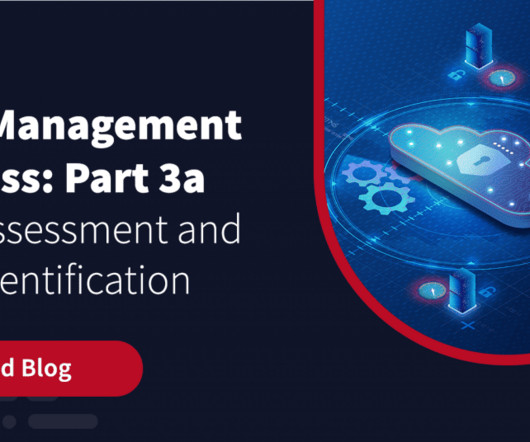Risk Management Process- Part 1: Overview
Zerto
APRIL 6, 2023
Risk management describes how a business identifies, analyzes, and responds to threats and risk factors that impact its profitability, viability, and strategic goals. To determine your organization’s risk appetite (the amount of risk it is willing to accept to realize its objectives), you need consensus from leadership and all stakeholders.

















Let's personalize your content